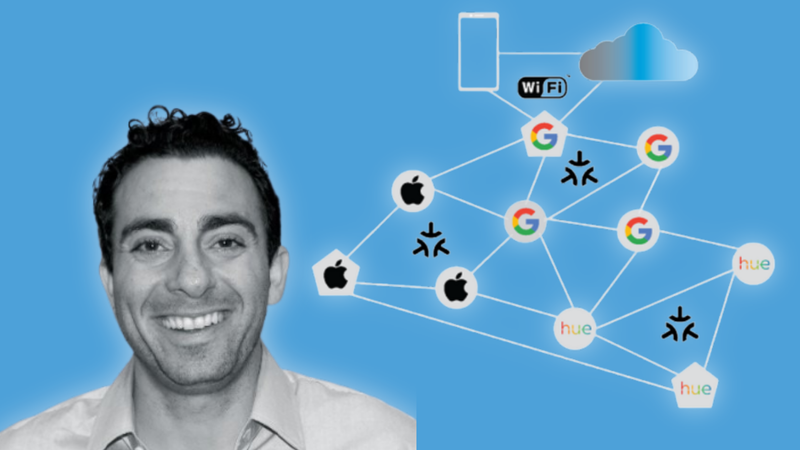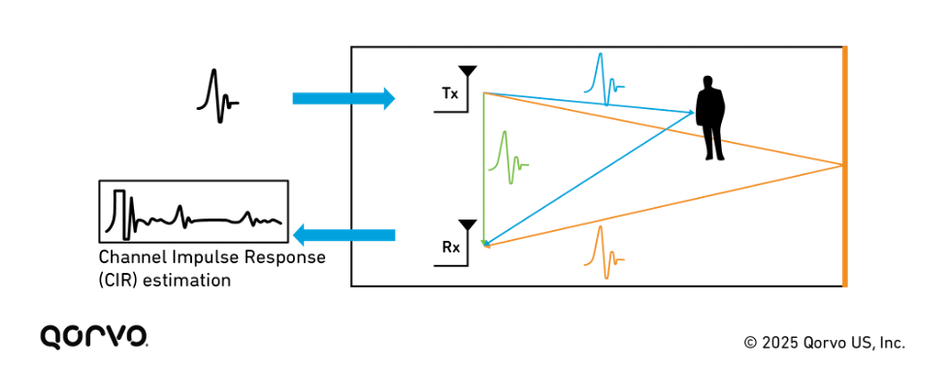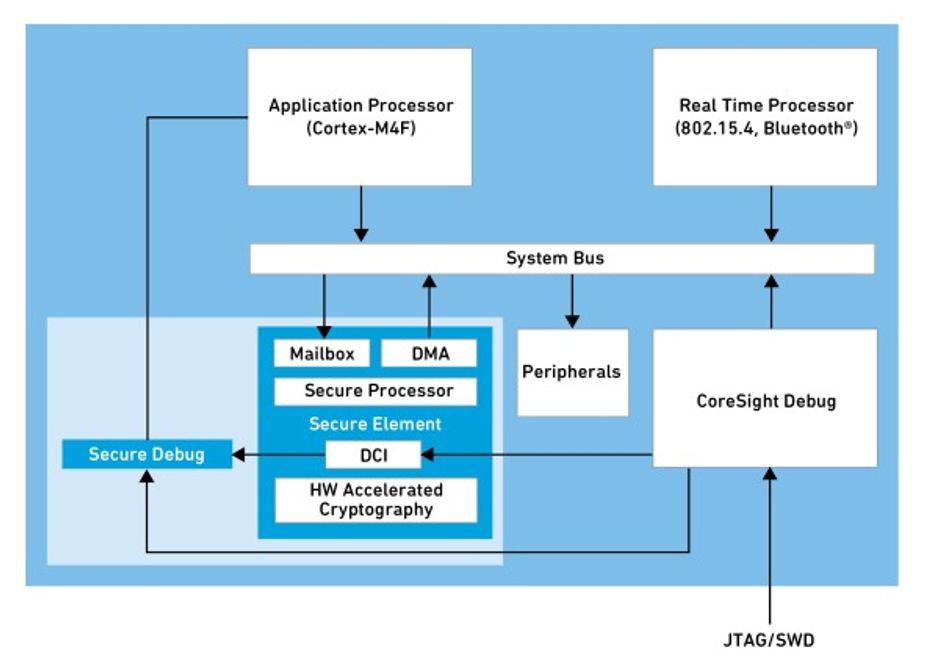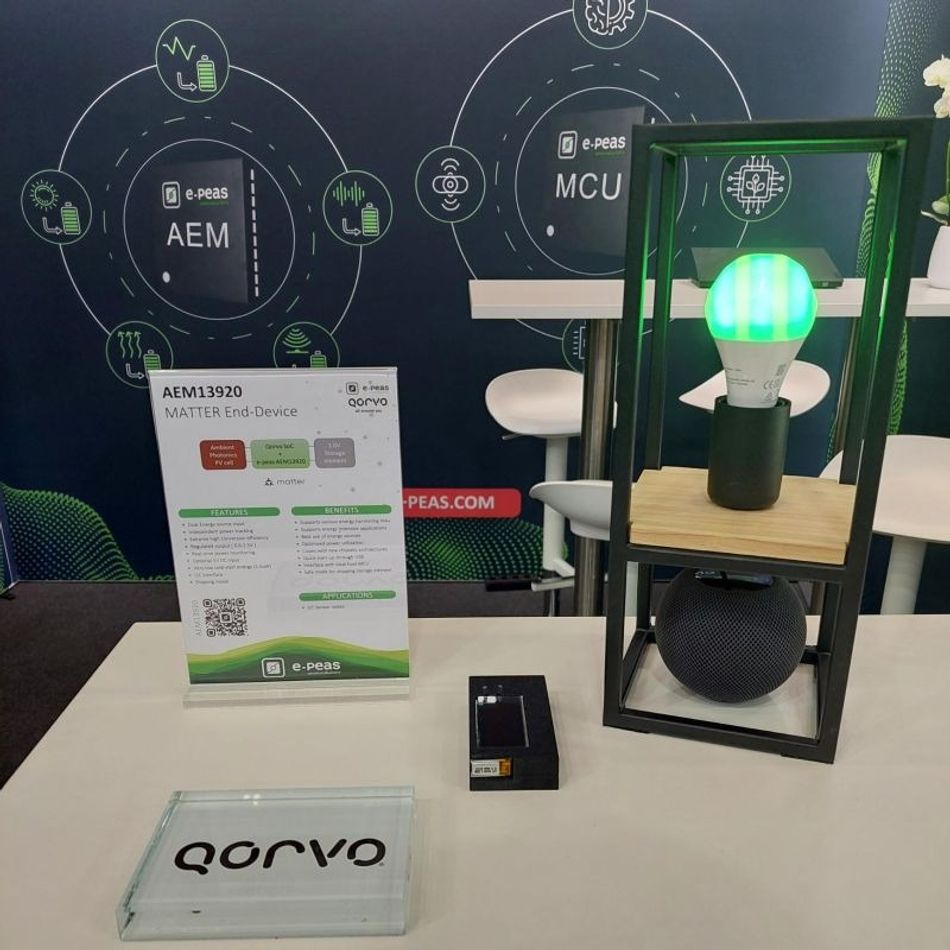Qorvo's Shadi Hawawini on UWB, Matter, and the Ecosystem That Binds Them
Learn more about how UWB is evolving, how Matter's standardization is enabling scalable ecosystems, and why Qorvo's partnerships and secure SoC platforms make it a leading player in the future of intelligent connectivity.
Ultra-Wideband (UWB) and Matter are two of the most significant recent technologies that have changed how we perceive and interact with the physical world. Qorvo, a leader in both technologies, has long been developing secure, low-power platforms that enable our smart home, enterprise, and industrial applications. Recently, Wevolver sat with Shadi, Qorvo’s Director of Ecosystem Development, to learn more about how UWB is evolving, how Matter’s standardization is enabling scalable ecosystems, and why Qorvo’s partnerships and secure SoC platforms make it a leading player in the future of intelligent connectivity.
Q: Shadi, how would you describe Qorvo’s vision for UWB and Matter over the next few years?
Shadi: We’re moving toward a world where devices both communicate and perceive, and UWB and Matter will both be instrumental to that shift. At Qorvo, we view UWB as a fundamental sensing and positioning technology that’s now expanding beyond fine-ranging and precision real-time location services into radar-based presence detection and contextual awareness. Matter, meanwhile, provides the universal language that makes this interoperability cohesive. Our vision is to merge these strengths into scalable, secure solutions for smart homes, enterprise buildings, factories, and really anywhere intelligence meets infrastructure.
From an ecosystem development standpoint, it’s about short-circuiting the "chicken-or-egg" problem that stalls new tech adoption. If the infrastructure and the accessories don’t launch in sync, value doesn’t materialize. That’s where I come in—aligning stakeholders, articulating use cases, and getting everyone to market together.
Q: What makes this combination so relevant to industrial and enterprise use cases?
Shadi: UWB’s roots in industrial real-time location systems (RTLS) gave it an early reputation for precision and security in factory and logistics environments. That industrial DNA remains relevant today and is becoming even more important as UWB is integrated into Wi-Fi 7 Enterprise Access Points. Additionally, UWB’s evolution adding radar-based sensing capabilities is opening up new possibilities. Unlike RTLS, UWB Radar does not require paired devices but can instead passively detect presence and motion using reflected signal energy. UWB, especially in combination with Matter, provides the accuracy and interoperability needed for high-value automation.
With Matter, device management becomes unified across ecosystems. And when you layer UWB into that architecture, you introduce contextual intelligence that adapts to who is in a space, what they’re doing, and what systems should respond without compromising privacy or performance.
Q: Let’s talk UWB. Qorvo has made significant strides evolving from fine-ranging to full radar. What’s driving that shift?
Shadi: Ranging is still foundational, but radar opens up a whole new layer of functionality. Our latest UWB chips, like the QM35825 SoC, allow developers to configure tradeoffs between power consumption, detection range, and accuracy. That unlocks presence detection, gesture recognition, and even vital sign monitoring. What makes this compelling is that the radar functionality essentially comes "for free" when you’re already using UWB. We’re also offloading processing from the cloud to the edge. This lowers power consumption and latency while enhancing privacy. A radar device can monitor breathing or heart rate without capturing video or identity.
Q: Can you give examples of use cases where UWB radar is starting to shine?
Shadi: One that comes to mind is non-contact vital sign monitoring in healthcare for neonatal and elder care. By detecting micro-movements like chest rise during breathing, UWB radar unlocks continuous monitoring of vital signs without cameras or wearables. We’re already seeing how it can be explored for neonatal care and elder monitoring, and it has the potential to truly save lives. In smart buildings, UWB offers accurate people counting and dynamic HVAC control. And in automotive, child presence detection using UWB is becoming mandatory in Europe.
Q: Matter is growing very quickly. How is Qorvo contributing to its ecosystem?
Shadi: We’ve been part of the Connectivity Standards Alliance from the beginning, and a big focus for us has been making sure Matter works not just in theory, but in real-world deployments, especially when it comes to security and scalability. One thing that really sets us apart is our ConcurrentConnect™ technology in the QPG6200 SoC. A lot of multi-protocol solutions out there rely on software switching between standards like Thread, Zigbee, and BLE. The problem is, that approach can introduce latency, drop packets, or even cause reliability issues in dense environments. With ConcurrentConnect, we take a hardware-based approach. It allows all three protocols to run at the same time, without stepping on each other. That means lower latency, lower power consumption, and a much more reliable user experience.
Q: What sets Qorvo’s Matter implementation apart, particularly when it comes to security?
Shadi: We built QPG6200 with a dedicated secure element that supports PSA Certified Level 2, hardware-accelerated cryptography, and secure provisioning workflows. This lets OEMs bring certified, future-proof Matter devices to market faster. Features like secure boot, encrypted OTA updates, and device attestation are all built in and make sure our system meets standards like NIST IR 8425 and ETSI EN 303 645
Q: One popular example of collaboration is the battery-free Matter light switch with e-peas. Tell us more about that.
Shadi: That project really highlights what’s possible when you bring the right partners together. e-peas provides the energy harvesting PMIC, we bring the ultra-low-power QPG6200 SoC, and Matter provides the standard. The result? A light switch powered entirely by ambient indoor light that requires no battery or maintenance for over a decade. That’s the kind of real-world impact this ecosystem can deliver.
Q: Are there other ecosystem partnerships that stand out?
Shadi: Absolutely. In radar, we partner with algorithm developers who help design sensing models for specific environments. That contextual learning, what does a signal mean in this factory vs. that hospital, is needed for performance. RTLS is another big area. We have a vast network of partners delivering full-stack solutions from UWB tags to cloud-based location engines. They help customers turn position data into process intelligence.
Q: Let’s pivot to security and regulation. How are you preparing your platforms for global compliance?
Shadi: We designed for flexibility. Security is a cat-and-mouse game, since new threats emerge, and standards evolve. Our platforms are built to adapt. We’ve baked in support for standards like NIST IR 8425 and ETSI EN 303 645, but we also go beyond compliance. Our secure provisioning processes guarantee that no sensitive key material is ever exposed. We offer features like debug authentication, secure firmware upgrades, and trusted lifecycle management to help OEMs meet today’s expectations and stay adaptable for whatever tomorrow brings.
Q: Looking to the future—how do UWB and Matter evolve when you bring edge AI into the picture?
Shadi: That’s the next evolution. UWB gives you presence and context. Matter gives you interoperability. AI gives you intent. Put them together and systems can personalize and adapt in real-time. Imagine walking into your house: UWB knows it’s you, Matter connects the light and HVAC systems, and AI adjusts them based on your behavior, preferences, and even ambient conditions. This convergence will define the intelligent environments of the future.
Q: Final thoughts—what advice would you give to system developers trying to future-proof their IoT strategies?
Shadi: Don’t build in isolation. Join standards bodies. Collaborate with partners. And prioritize flexibility by choosing platforms that support multiple protocols and can adapt to evolving standards. At Qorvo, we're investing in silicon, software, and system-level tools to help our partners go from concept to market faster and more securely.
About Shadi Hawawini
Shadi Hawawini is Director of Ecosystem Development for Qorvo’s UWB and Matter solutions. He is responsible for defining and bringing new solutions and use cases to market that reduce friction when interacting with technology. Before Qorvo, he led product and customer experience at Everactive and held product marketing and system architecture roles at Qualcomm, where he pioneered QuickCharge technologies now used worldwide.




